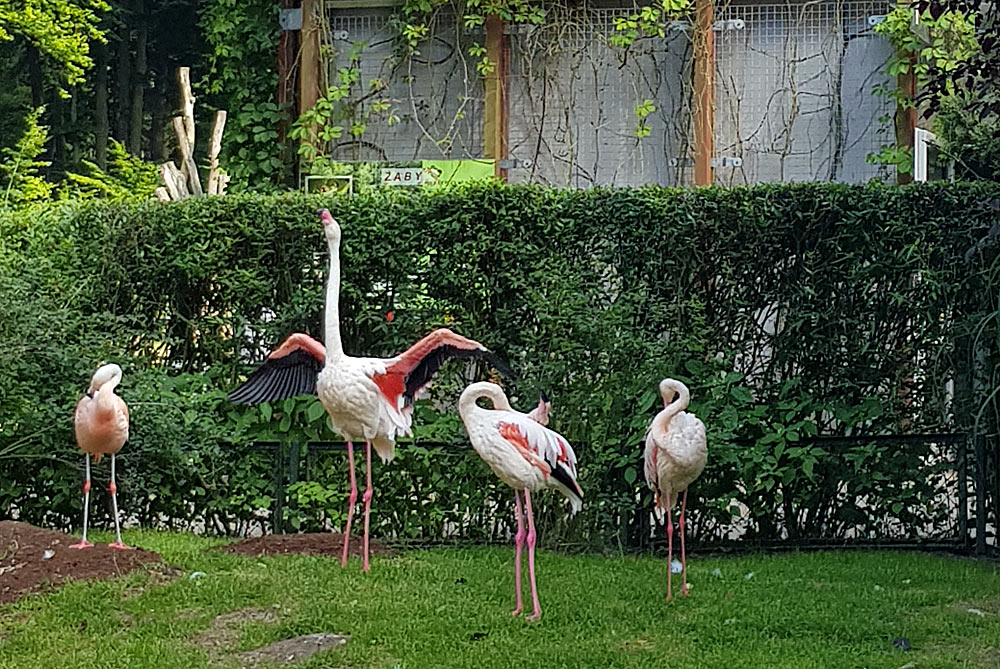Visiting Krakow’s mounds with a guide is a trip to distant and near times. Five mounds make Krakow a record holder. The oldest are the Krakus and Wanda Mounds, the most popular Kościuszko Mound with an exhibition, the largest – Piłsudski, and the youngest and smallest – John Paul II. The sixth mound of Esterka, the beloved of King Casimir the Great, used to stand
in the park surrounding the palace in Łobzów.
Mounds
Parks
There are over 50 parks in Krakow. Some of them are historic parks. They are located in different parts of the city. They support Krakow’s nature. They respect the cultural, historical and patriotic heritage. They are developed in an attractive way. The first playground park for children and young people in Poland – Henryk Jordan Park in Krakow – has become the prototype of the Jordan gardens.
The Wojciech Bednarski Park is one of the first in the world to translate post-industrial land reclamation. Strzelecki Garden, Planty Garden, Decius Park, Błonia, Marek Grechuta Krakow Park, etc.
Fortress of Krakow
The fortress is a defensive architecture of the city from the turn of the 19th and 20th centuries built by Austrians. The city was surrounded by three rings of fortifications. The total circumference of the fortress was almost 60 km.
Out of the complex of military buildings about 180 objects of various use have survived to this day, including forts, battle shelters, artillery batteries, relics of fortifications, barracks, military hospitals.
Traces of the former fortifications can be found in various parts of the city. The modern adaptation of some elements of the fortress is awe-inspiring. These include museums, cultural institutions, and nature reserves with viewpoints over Krakow and its surroundings.
Wolski Forest
The Wolski Forest is the largest green enclave on the map of Krakow (area 419 ha). Its name comes from the Grand Marshal of the Polish Crown, Mikołaj Wolski from Podhajece, who in 1603 brought and settled here the Order of Camaldolese.
In 1917, the forest was purchased by the Krakow City Savings Association, to be used by the Krakow citizens. In the heart of the forest there is the Józef Piłsudski Mound of Independence, the Zoological Garden founded in 1929, the Center for Ecological Education “Symbioza”. There are numerous recreational and bike paths stretching along a total length of 40 km. At the foot
of the monastery in Bielany, there is a private vineyard, Srebrna Góra.
Zoological Garden
In medieval Krakow, as in other capitals of that time, there were menageries and royal game parks. In the 19th century, a small zoo existed in Park Krakowski. The Zoological Garden was opened in 1929. Located in the center of the Wolski Forest, it has excellent living conditions for animals, and for visitors it is a great place for rest and education.
The garden actively participates in international breeding programs. A delightful animal world and an abundance of flowering plants. You can also become a sponsor of a selected animal.
Botanical Garden
The Botanical Garden of Jagiellonian University in Krakow, which was established in 1783, is the oldest in Poland.
In 1976 it was enlisted in the Polish registry of historical monuments as a valuable natural object, a monument to the history of science, garden art and culture.
The garden is a home to about 5000 species of plants from all over the world, including almost 1000 species of trees and shrubs, and more than 2000 species of greenhouse plants.
The most valuable specimen in the garden, and the oldest one kept in greenhouse conditions
in Europe, is a unique date palm from a natural site in the Canary Islands which is in the garden since the second half of 19th century.
Experimental Garden
Stanisław Lem Science Garden in Krakow is the first educational park in Poland.
Established in 2007, it is an open-air branch of the Museum of Municipal Engineering in Krakow.
There are over 60 exhibits placed on the area of almost 7 hectares of the park. Among them we can find devices demonstrating the phenomena of physics, the geological exhibition “Geo-gródek” and the sensory exhibition “Zapachowo”, a green labyrinth, “Lem-birynt”, with quotes from the patron of the garden Stanisław Lem, and the Garden Library with his works.
Cemeteries
Krakow’s necropolises are crypts of distinguished persons, as well as municipal, religious, war and parish cemeteries. From the beginning of the 18th century a ban on burials in church cemeteries within the city was introduced.
In the years 1801-2 Rakowicki Cemetery, the most famous necropolis of Krakow, was created. Salwator cemetery, established in 1865, has a beautiful location. Both cemeteries are the resting place of many scientists, artists and people of national fame.
Krakow’s Jewish cemeteries have their own long history, legends, as well as a tragic history during World War II. Only the grave of Rabbi Moses Isserles Remu and his closest family was left untouched.
























